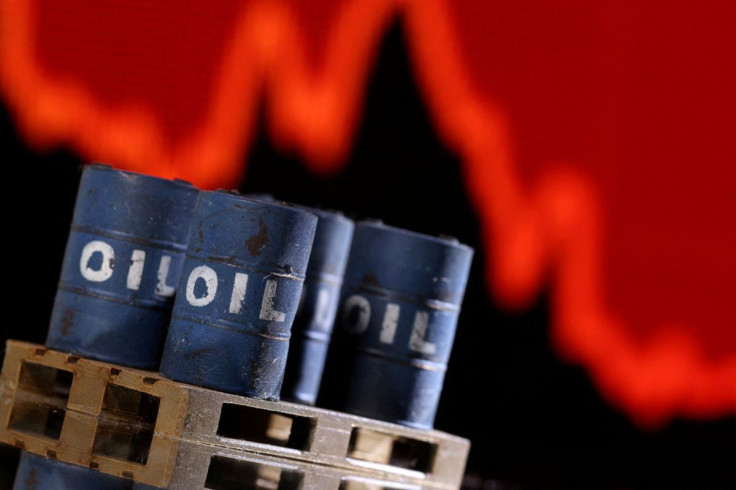Oil Plunges Over 6% On Easing Supply Concerns, China COVID Cases

Oil prices tumbled more than 6% to their lowest in almost three weeks on Tuesday as supply disruption fears eased and surging COVID-19 cases in China spurred demand concerns.
Brent futures plummeted $6.99, or 6.5%, to settle at $99.91 a barrel, while U.S. West Texas Intermediate (WTI) crude fell $6.57, or 6.4%, to settle at $96.44 a barrel. Both contracts settled below $100 per barrel for the first time since late February.
Brent fell as low as $97.44 during Tuesday's session and WTI hit $93.53, their lowest since Feb. 25.
Both contracts moved the closest to oversold territory since December. They had been in overbought conditions as recently as early March, when the benchmarks reached 14-year highs after Russia's invasion of Ukraine. Since then, Brent has lost nearly $40 and WTI has fallen by more than $30.
The steep decline on Tuesday came as Russia said that it has received written guarantees it can carry out its work as a party to the Iran nuclear deal, suggesting that Moscow would allow a revival of the tattered 2015 pact to go forward. [nL2N2VI1Y1]
The talks to revive the nuclear accord, which would lead to sanctions on Iran's oil sector being lifted and allow Tehran to resume crude exports, had recently stalled because of Russian demands.
At the same time, a Ukrainian negotiator on Tuesday said talks with Russia over a ceasefire and withdrawal of Russian troops from Ukraine are ongoing.
In the fallout from Russia's invasion, which it calls a "special operation," Western sanctions against Russia have failed to deter China and India from buying Russian crude.
Tuesday's steep price decline surprised several analysts.
"Whilst reports of promising talks (between Russia and Ukraine) are to be welcomed, it is hard to see how either side at this stage would be prepared to make concessions that would be acceptable to any party," said a research note from Kpler. "In this current situation, it is hard to see how crude oil prices are not being under-priced."
Further adding price pressure, China saw a steep jump in daily COVID-19 infections, raising renewed worries about the recovery from the coronavirus pandemic.
China oil demand risk is real," said Louise Dickson, senior oil market analyst for Rystad Energy.
"It is estimated that a severe lockdown in China could put 0.5 million bpd of oil consumption at risk, which would be further compounded by fuel shortages due to inflated energy prices."
Meanwhile, the U.S. Federal Reserve is widely expected to raise interest rates by 25 basis points on Wednesday for the first time in four years to fight soaring inflation. Such a move could strengthen the U.S. dollar and dampen demand for commodities priced in the currency.
In addition to the Russia-Ukraine conflict, spare crude production capacity remains limited from the Organization of the Petroleum Exporting Countries (OPEC) and its allies, collectively known as OPEC+.
OPEC on Tuesday said oil demand in 2022 faced challenges from Russia's invasion of Ukraine and rising inflation as crude prices soar, increasing the likelihood of reductions to its forecast for robust demand this year.
© Copyright Thomson Reuters {{Year}}. All rights reserved.





















